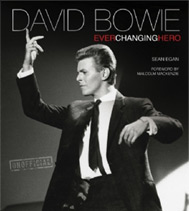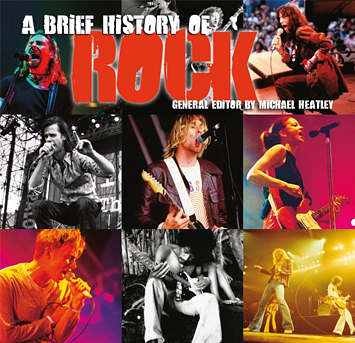The most famous female musician and poet of ancient Greece was Sappho (b. c. 612 bc) from the island of Lesbos. Her music has not survived, but she is known to have accompanied her poetry on a variety of harp-like instruments. Sappho’s work includes love songs to other women and epithalamia (choral wedding songs). Elsewhere in ancient Greece women worked as instrumentalists, singers and dancers. Many professional female musicians were slaves ...
There are specific words for female minstrels in many medieval languages, such as jougleresse (Provençal), ménestrelle (Old French) and gliewméden (Middle English). The Provençal word trobairitz was used for female troubadours. Over 20 of these women are known by name, including Azalais de Porcairages (b. 1140) from Montpellier, Bieiris de Romans (fl. early 13th century); Dame Castelloza (b. c. 1200), a noblewoman from the Auvergne whose lyrics are full of ...
In the medieval period the convent was one of the few places where women could gain a musical education and find a valued forum for their music-making. Liturgical music, organized by the cantrix of the convent, was performed several times a day and formed a central element of the nuns’ spiritual and artistic lives. Herrad of Landsberg (fl. 1167–95), abbess of Hohenbourg near Strasbourg, was responsible for compiling a religious encyclopedia ...
During the Renaissance, European noblewomen were taught to sing and play particular instruments deemed suitable for them, such as the harp, lute and keyboard. Improvising songs with accompaniment was an important aspect of such music-making but, as in other improvising traditions, few women of this class ever wrote down the music they created, so it has not survived. There are many reports of talented noblewomen of the early sixteenth century, such ...
The rise of opera in the early Baroque period provided increased musical opportunities for women, especially as singers, but also as composers. One of the earliest female opera singers was Vittoria, who worked for the Medici court in Florence. Her career was overshadowed by that of another Medici employee, the composer and singer Francesca Caccini, who by the 1620s was the highest-paid musician at the Medici court. Caccini wrote the ...
As keyboard instruments, from the harpsichord to the new-fangled pianoforte, became available in a variety of European households, they were widely played by well-to-do young ladies, eager to develop what was seen as an important accomplishment. Jane Austen’s novels present illuminating portrayals of women amateurs, from those to whom playing was simply a way of attracting a husband to those for whom music was an important part of life. The ...
During the classical era women, usually from the nobility or royalty, continued to play an important role in promoting music. In Berlin, Frederick the Great’s sister, Anna Amalia (1723–87), encouraged the performance of earlier music by building an impressive library of works by the great composers. Another Anna Amalia, the Duchess of Saxe-Weimar (1739–1807), established a highly artistic court at Weimar, where theatre and opera were particularly encouraged. Women also ...
During the nineteenth century, women amateurs of the middle and upper classes continued to be taught music privately, often receiving an extremely thorough musical education from the leading musicians of the day. Professional women musicians, like their eighteenth-century predecessors, often came from musical families and were traditionally taught by their parents. Although many learned the art of musical performance in the privacy of their own homes, some attended small private ...
Given the long tradition of regarding the keyboard as a suitable and attractive instrument for a woman, it is not surprising that it was mostly as pianists that women made their names as professional virtuoso soloists in the early nineteenth century. The leading female pianist was undoubtedly Clara Schumann, who was acclaimed as one of Europe’s leading players throughout an extremely long career. Schumann was largely responsible for introducing the ...
The Victorian drawing-room ballad is a much-derided musical genre – perhaps partly due to the way in which it was so successfully and stylishly cultivated by women composers. In fact, in the mid-nineteenth century, some male composers even used female pseudonyms, as, for example, ‘Florence Fare’, pen name of Alfred William Rawlings. Two of the most successful songwriters of this period were Virginia Gabriel (1825–77), whose songs have an appealing ...
The nineteenth century was the age of the great diva, the female opera-singer who performed roles in which she usually ended up mad, abandoned or dead, but who mesmerized audiences with the power of her voice. The theatre was not seen as a respectable work-place and for most of the century female opera-singers were not regarded as reputable women. Their talents were usually ascribed to natural gifts rather than the ...
Towards the end of the nineteenth century, women throughout Europe and the US were entering the music profession as instrumentalists, singers, teachers, journalists, musicologists, administrators and composers of all genres of music, from song to symphony. One of the most significant advances was the appearance of the female violinist. There had been isolated instances of successful female violin virtuosos for centuries but in general the violin was deemed to be ...
During the twentieth century, increasing numbers of women worked as composers, and there is little that links them together other than the varying degrees of resistance that they encountered as they forged their careers. But while there are the disheartening stories of women such as Alma Mahler (1879–1964), agreeing to the demand of her husband Gustav Mahler that she give up her own composition when they married (although when he ...
As the conductor is placed in a very visible position of power over other musicians, conducting has been a particularly difficult career for women to pursue. While women have, in fact, conducted throughout history, it is still relatively rare to find them working with professional symphony orchestras. In the late nineteenth and early twentieth centuries, women such as Frédérique Petrides (1903–83), director of the American Orchestrette Classique, often conducted all-women ...
Several women composers of the late twentieth century have a particular affinity for opera, while also writing works in a wide variety of other genres. For the Scottish composer Thea Musgrave (b. 1928), writing her first full-length opera, The Decision (1965), led to the development of what she describes as her ‘dramatic-abstract’ instrumental style. Her later operas, which make effective use of traditional music, include Harriet, the Woman Called Moses ...
AUTHORITATIVE
An extensive music information resource, bringing together the talents and expertise of a wide range of editors and musicologists, including Stanley Sadie, Charles Wilson, Paul Du Noyer, Tony Byworth, Bob Allen, Howard Mandel, Cliff Douse, William Schafer, John Wilson...
CURATED
Classical, Rock, Blues, Jazz, Country and more. Flame Tree has been making encyclopaedias and guides about music for over 20 years. Now Flame Tree Pro brings together a huge canon of carefully curated information on genres, styles, artists and instruments. It's a perfect tool for study, and entertaining too, a great companion to our music books.

David Bowie
Fantastic new, unofficial biography covers
his life, music, art and movies, with a
sweep of incredible photographs.


